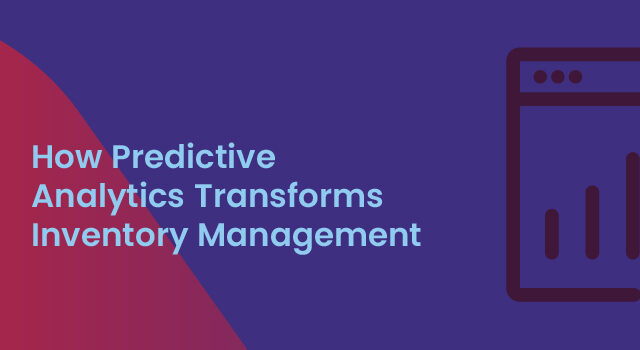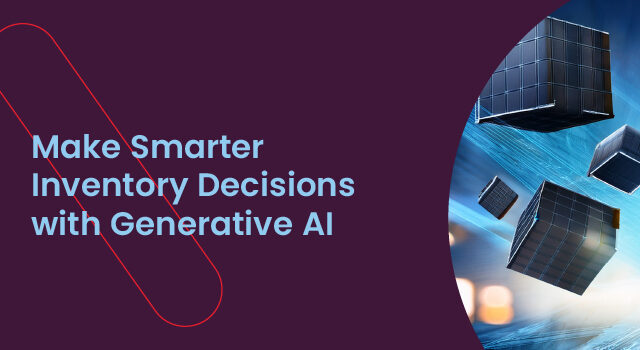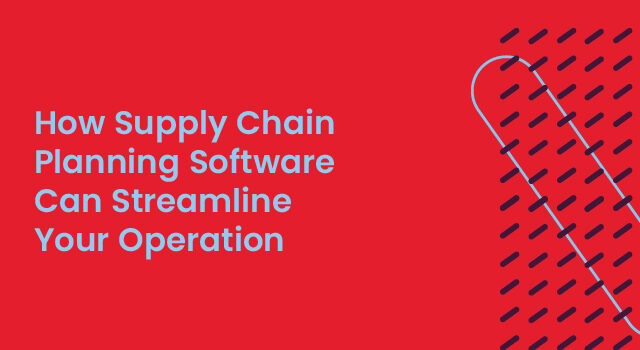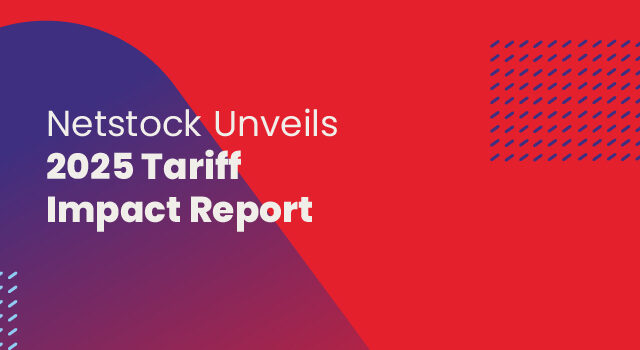Is your organization prepared to handle sudden demand shifts or supply chain disruptions? Effective demand plans incorporate robust demand forecasts to prevent those issues before they become problems.
The key link between accuracy and a timely response to sudden changes is real-time AI-driven demand forecasting.
Imagine the perfect inventory planning solution that improves the efficiency of your demand planning by:
- ensuring inventory levels are aligned with actual demand
- minimizing waste and carrying costs of expensive SKUs
- maximizing availability and reducing stockouts
This perfect inventory planning solution – Netstock – offers innovative demand planning solutions that integrate machine learning into forecasting capabilities.
In this guide, you’ll learn how to optimize your demand planning with AI-driven real-time forecasting. We’ll also showcase the benefits through compelling customer success stories.
Understanding demand forecasting
Demand forecasting predicts changes in demand. This capability allows businesses to align their operations with market needs, reduce excess inventory, and minimize stock-outs.
What is demand forecasting?
Demand forecasting is estimating future customer demand over a specific period. It involves analyzing historical data and market trends to predict future sales. The goal is to accurately estimate the number of goods customers will likely purchase over time.
Back in the day, demand planners would rely on traditional demand forecasting methods such as:
- Qualitative methods: expert judgment and market research
- Quantitative techniques: time series analysis and causal models
Even today, most small and medium-sized businesses rely on a combination of these traditional methods. They often integrate basic statistical tools and software that can handle historical data analysis. However, this approach must be updated since it’s limited and prone to error. It also doesn’t take into account real-time demand shifts.
Importance of accurate forecasting
Accurate forecasting is the foundation of demand planning. It impacts every operation, from production planning to customer service.
Here’s how accurate forecasts address the critical areas of the traditional demand planning process:
- Inventory management: An accurate prediction of future demand helps companies maintain optimal inventory levels, reduce carrying costs and minimize stockouts.
- Cost control: Accurate forecasts help align production schedules with demand, reducing the costs associated with overproduction or rush orders.
- Customer satisfaction: Happy customers are good for business. Being able to meet customer demand on time enhances loyalty and stability.
The shift to real-time demand forecasting
Significant market changes can have immediate effects, requiring supply chains to adjust in real-time. This approach to demand forecasting empowers businesses to stay agile, responding swiftly to shifts in consumer behavior and remaining competitive and efficient.
Defining real-time demand forecasting
Real-time demand forecasting uses current data to predict future customer demand instantly. Unlike traditional methods that rely on historical data and periodic updates, real-time forecasting continuously integrates fresh data for up-to-the-minute insights.
This approach allows businesses to make informed decisions quickly, saving time and resources. Platforms like Netstock leverage real-time data integration features that promote collaborative and flexible forecasting capabilities.
Benefits of real-time data integration
Integrating real-time data in demand forecasting helps companies unlock major benefits that directly translate to their operations:
- Enhanced accuracy: Incorporating up-to-date information improves the precision of demand forecasts and reduces the risk of overproduction or stock-outs.
- Improved responsiveness: Businesses can quickly react to market changes, such as sudden spikes or drops in demand.
- Increased agility: Real-time insights enable companies to pivot strategies promptly.
- Optimized inventory management: Accurate forecasts help maintain optimal inventory levels.
Challenges in implementing real-time forecasting
While the benefits of demand optimization & planning software are clear, implementing real-time demand forecasting comes with a few challenges:
- Data integration complexities: Combining data from various sources in real-time requires robust IT infrastructure.
- Need for continuous updates: Maintaining data quality is essential for accurate forecasting.
- Investment in technology: Implementing systems can require significant investment.
The role of AI in demand forecasting
Traditional forecasting methods often need help with the sheer volume and complexity of data available today. AI does not.
AI analyzes both structured and unstructured data for its precise predictions.
Machine learning (a subset of AI) uses algorithms that learn from historical data to make predictions about future demand. In demand forecasting, these algorithms continuously improve their accuracy by analyzing past sales data, market trends, and other relevant factors, adapting their predictions as new information becomes available.
They also identify patterns and trends that might be less obvious to human analysts.
Benefits of AI in demand planning
The AI functionality in demand forecasting supercharges demand planning with accuracy and adaptability.
Some of the biggest benefits are:
- Cost reduction: Less forecasting errors – better inventory levels.
- Real-time adaptability: Real-time decision-making allows companies to stay ahead of market shifts.
- Improved decision-making: With AI-driven insights, companies make more informed decisions. Netstock’s user-friendly interface gives stakeholders clarity when making strategic decisions.
See Netstock’s Demand and Supply Planning in Action!
Real-life examples of AI demand forecasting
Shimano is a prime example of a company that has successfully harnessed real-time demand forecasting. With Netstock’s solutions, they transformed their demand planning processes, leading to greater efficiency and responsiveness.
Shimano: enhanced inventory visibility and forecasting across distribution channels
Shimano, a leader in the cycling industry, faced major challenges with inventory management and demand forecasting. The company struggled with limited visibility, making it hard to optimize production and replenishment in response to shifting demand.
This lack of insight led to higher carrying costs and an increased risk of stock-outs, which could result in customer dissatisfaction. To overcome these issues, Shimano turned to Netstock, gaining access to advanced analytics and real-time insights into their inventory and demand trends.
Netstock’s Predictor IBP solution emerged as the ideal choice. By seamlessly integrating with their ERP system, Shimano gained a clear view of their inventory holdings. This integration empowered them to optimize inventory levels based on accurate demand forecasts.
Consequently, Shimano was able to maintain a leaner inventory while ensuring product availability, ultimately enhancing operational efficiency and customer satisfaction.
“We were amazed at the flexibility and depth of the analysis that we were able to perform. We can easily select the customers that we want to forecast individually. Previously, these types of changes would have required IT prioritization and took much longer to complete. Now, we can add new key customers or channels in no time flat, experiment with alternative hierarchies and roll-ups, and formulate new insights, all without consuming valuable IT resources.” – Sr. Manager of Supply Chain
Integrating AI and Real-Time Forecasting into Demand Planning
Integrating AI and real-time forecasting into demand planning is a game-changer for business operations.
3 steps to implement AI-powered demand forecasting
Here’s how to implement these advanced technologies into your demand planning process:
- Select the right tools and software
Evaluate your existing systems and identify gaps that AI-powered tools can fill. Look for solutions that seamlessly integrate your current infrastructure and ERP data. Consider factors like data compatibility, scalability, and user-friendliness. Choose a platform that can handle large datasets and provide real-time analytics. For example, Netstock has amazing predictive analytics that easily integrates with existing ERP systems. - Align forecasting tools with business goals
Clearly define your business objectives and choose tools that align with these goals. If you aim to reduce inventory costs, select a forecasting tool that offers precise demand predictions and optimization features Regularly review and adjust your tools so they continue to support your strategic objectives. - Train teams to use advanced tools
Invest in comprehensive training programs for your team to ensure they can effectively use the new tools.
Collaborative approach to demand planning
A collaborative approach to demand planning is key to achieving data accuracy. However, collaboration among different departments is often a tricky topic for big supply chains.
Here are 3 tips on how to encourage collaboration and data sharing:
- Cross-department collaboration
Encourage collaboration between sales, marketing, and supply chain teams. Sales data can indicate emerging trends, while marketing campaigns can influence demand patterns. - Data types and processing
Collect and process diverse data types such as sales figures, market trends, and customer feedback. Ensure data flows freely across departments to maintain a unified view of demand. - Continuous monitoring and refining
Monitor the performance of your forecasting models regularly. Use real-time data to adjust and refine these models, ensuring they remain accurate and relevant. Implement feedback loops where teams can provide insights on model performance and suggest improvements.
The future of real-time and AI-driven demand forecasting
Integrating real-time and AI-driven forecasting into demand planning enhances accuracy, optimizes inventory management, and improves responsiveness to market changes. Netstock’s innovative demand planning solutions infuse advanced machine learning for precise forecasting. These technologies quickly help businesses to make informed decisions, adapt to consumer behavior shifts, and maintain a competitive edge.





